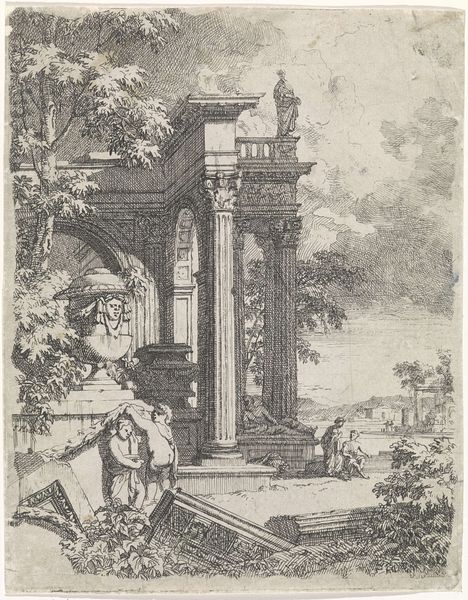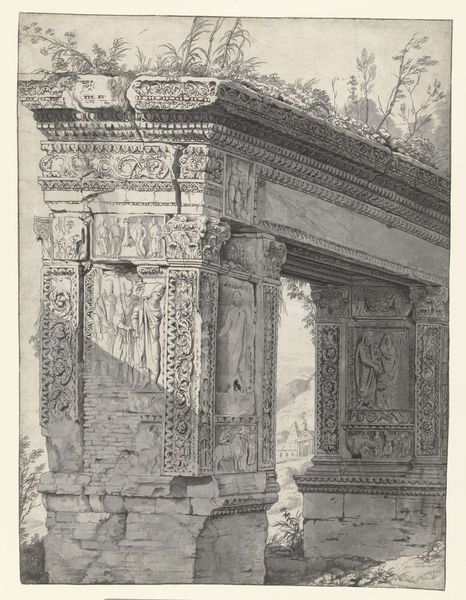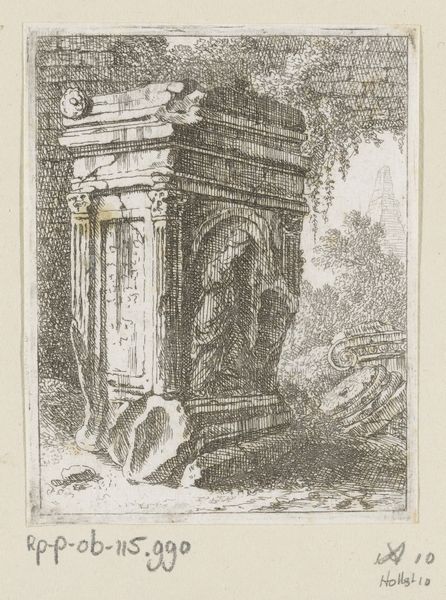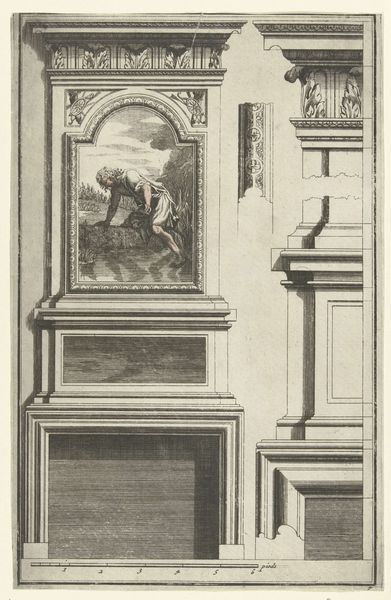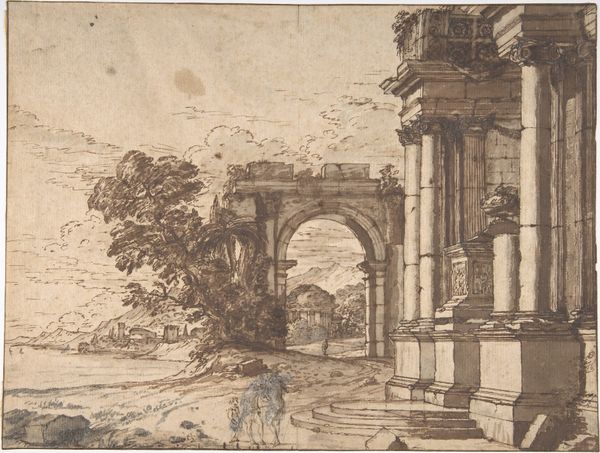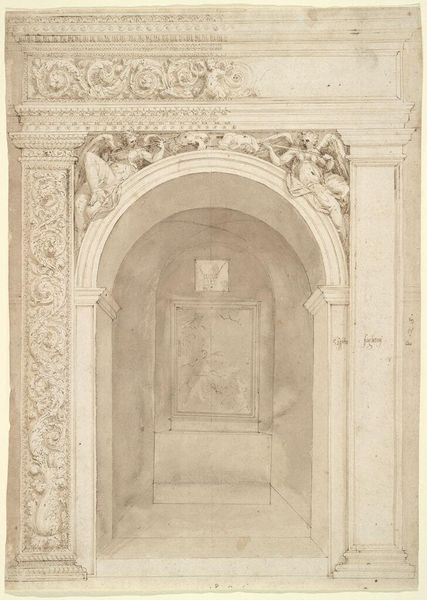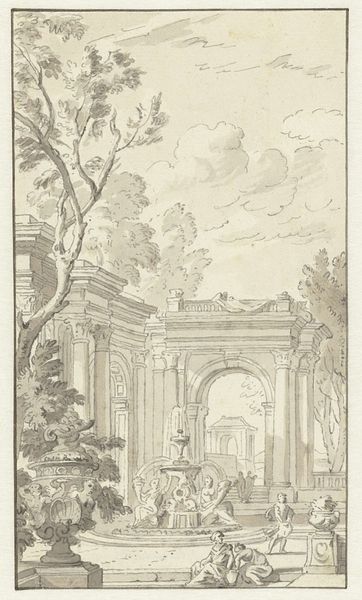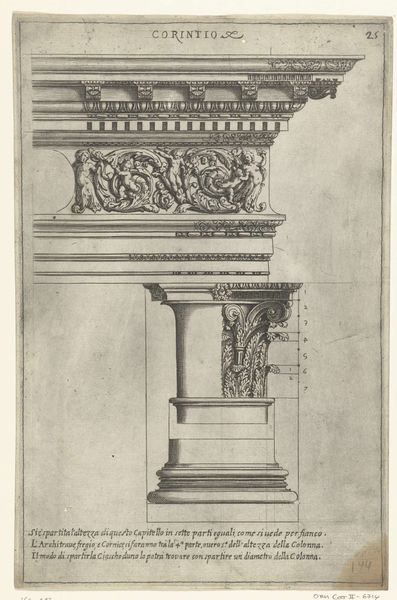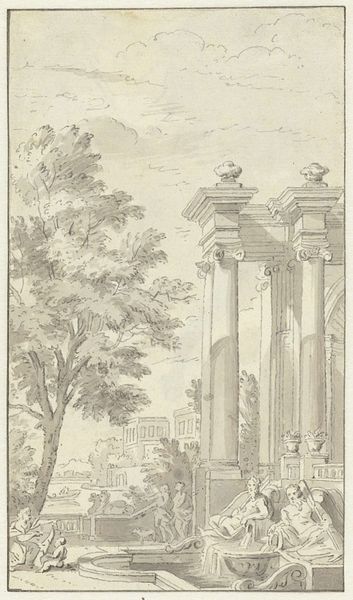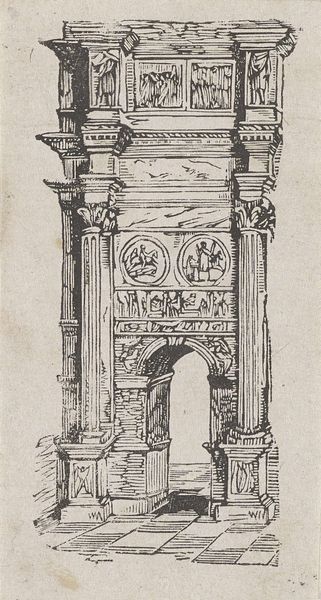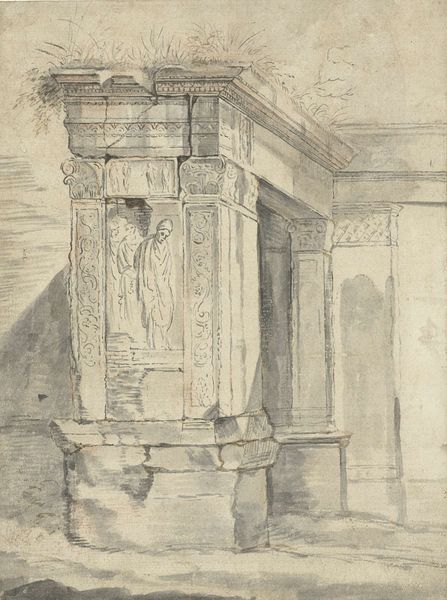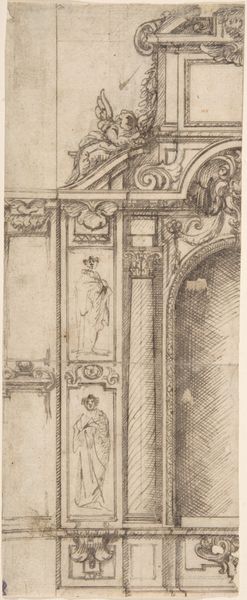
drawing, ink, pen, architecture
#
drawing
#
aged paper
#
quirky sketch
#
mechanical pen drawing
#
pen sketch
#
old engraving style
#
sketch book
#
landscape
#
personal sketchbook
#
ink
#
geometric
#
classicism
#
ancient-mediterranean
#
pen-ink sketch
#
line
#
pen work
#
sketchbook drawing
#
pen
#
history-painting
#
architecture
Dimensions: height 551 mm, width 403 mm
Copyright: Rijks Museum: Open Domain
Editor: So, this is "Romeinse triomfboog," a pen and ink drawing by Willem Romeyn, made sometime between 1634 and 1694. I'm struck by how the detail of the arch contrasts with the openness of the landscape in the background. What do you see when you look at this piece? Curator: It is intriguing, isn't it? Ignoring any narrative suggestions, what strikes me most is the masterful control of line and the tonal variations achieved through hatching and cross-hatching. Consider how the artist delineates the arch itself, using heavier lines to suggest depth and shadow, contrasting with the much lighter treatment of the background elements. Editor: The way you focus on the line work makes sense. It almost feels like I’m looking at blueprints, like a study of form before anything else. But why isolate it from history? Isn't a triumphal arch inherently…historical? Curator: Indeed. Yet, by focusing on its formal qualities – its lines, textures, and the interplay of light and shadow – we gain insight into the artist’s process and intent. Consider the careful rendering of the geometric shapes. Note the aged paper with its almost gold-looking patina, this is only contrasted with the pen strokes on the Arch. Romeyn's interest is more geared towards the underlying structure than its original function. Editor: I guess by thinking about how the shapes work, it takes the object out of its past. Now, it feels less like an emblem and more like… geometry. Curator: Precisely! The visual elements take precedence, encouraging a contemplative experience separate from any predetermined historical context. The drawing transcends mere representation. Editor: That's given me a fresh appreciation for seeing it as more than just a historical document. Thanks for showing me that a closer look at lines and forms helps decode the image in surprising new ways. Curator: My pleasure! It is through this constant questioning of form and its relationship to space that we reveal the artwork's full potential for interpretation.
Comments
No comments
Be the first to comment and join the conversation on the ultimate creative platform.

